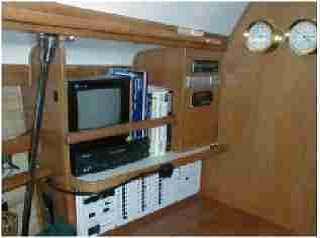Storage Ideas
Harvey Berman
11/1/2001
Hull #: 201
The following is from Harvey Berman, who has sailed his C380, ”Soultice” from Canada to Central America.
Dear Warren:
I have been intending to submit some modifications for some time but never had a proper camera or was in a location that was convenient. I am submitting these at this time, without photos as you have encouraged.
Photos can be supplied at a later date if required.
We own hull # 201. Our 380 was delivered to Swan’s Marina, Ontario, Canada in July of 1999. We immediately commissioned her and headed south for a two-year cruise, which included Central America. We had to have more convenient storage space. There is a lot of room on the 380 but not all usable. “Soultice” is presently on the hard near Tampa, Florida. I am going by memory, but can supply more detail this winter
You need to be logged in to see the rest of this content. Catalina380-IA members, please login.
To join please fill out a membership application (Association->Membership Application) and send a check to the address on the form.

